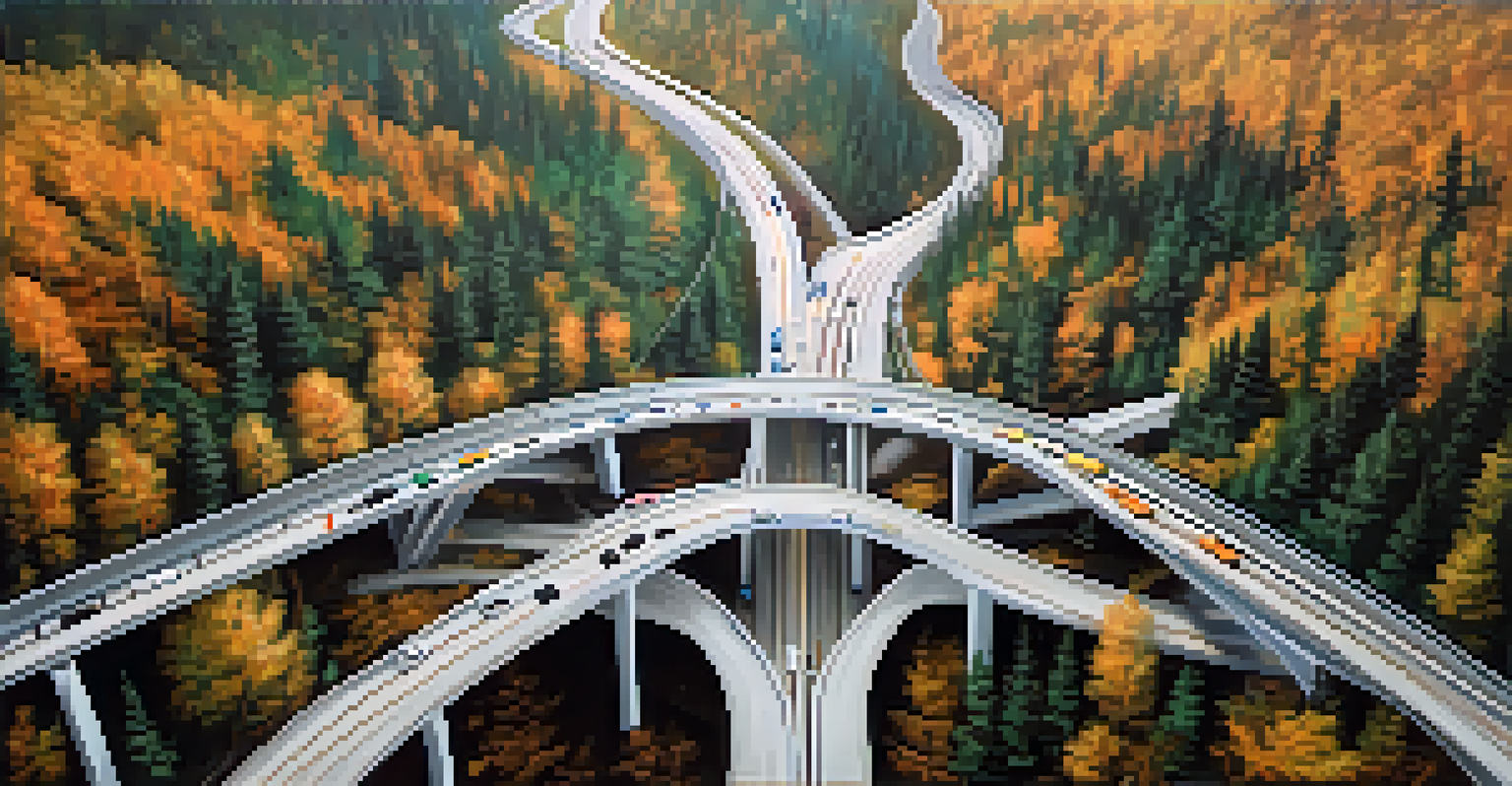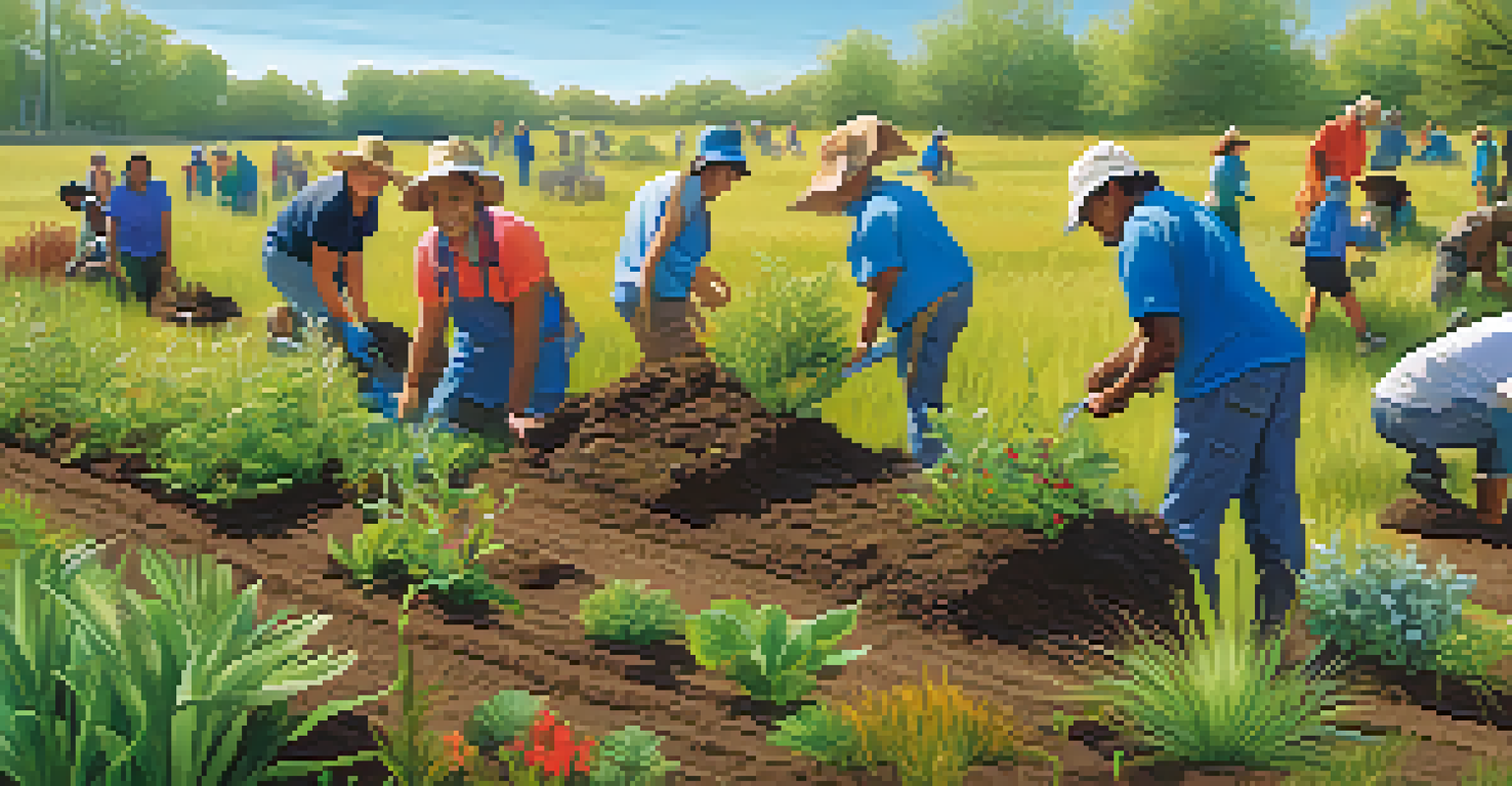Wildlife Corridors: Connecting Habitats for Species Survival

What Are Wildlife Corridors and Why Are They Important?
Wildlife corridors are designated pathways that connect different habitats, allowing animals to move freely between them. These corridors can be natural, like rivers or forests, or man-made, such as bridges or tunnels designed for animals. The importance of these corridors cannot be overstated, as they play a crucial role in maintaining biodiversity and the overall health of ecosystems.
Wildlife corridors are essential for maintaining biodiversity and allowing species to adapt to changing environments.
Imagine a highway built for cars that cuts through a forest, isolating wildlife on either side. Without corridors, animal populations can become trapped, leading to inbreeding and a decline in genetic diversity. By facilitating movement, wildlife corridors ensure that animals can find food, mates, and suitable habitats, which are essential for their survival.
In essence, wildlife corridors are the lifelines of nature, connecting fragmented landscapes and providing safe passage for various species. They help maintain ecological balance and allow animals to adapt to environmental changes, making them a vital component of conservation efforts.
The Threats of Habitat Fragmentation
Habitat fragmentation is one of the most significant threats to wildlife today. It occurs when large habitats are divided into smaller, isolated patches, often due to urban development, agriculture, or road construction. This separation can lead to a host of problems for wildlife, including reduced food sources and increased mortality rates due to vehicle collisions.

For example, consider the plight of the Florida panther, which has been pushed into smaller and smaller territories due to human encroachment. As their habitat shrinks, these magnificent creatures face the risk of inbreeding, which can weaken their population. Wildlife corridors can help mitigate these issues by reconnecting fragmented habitats and allowing panthers and other species to roam freely.
Wildlife Corridors Connect Habitats
These pathways facilitate animal movement between fragmented habitats, crucial for maintaining biodiversity.
Ultimately, addressing habitat fragmentation is essential for the survival of many species. Wildlife corridors serve as a crucial tool in conservation efforts, helping to restore connectivity and resilience in ecosystems that have been disrupted by human activity.
Successful Examples of Wildlife Corridors
Around the world, there are numerous success stories that highlight the effectiveness of wildlife corridors. One notable example is the Banff Wildlife Crossings in Canada, where bridges and tunnels have been built to help animals safely cross the Trans-Canada Highway. Since their installation, wildlife-vehicle collisions have decreased significantly, and several species, including deer and bears, have been able to expand their ranges.
Conservation is a state of harmony between men and land.
Another inspiring case is the Yellowstone to Yukon Conservation Initiative in North America, which aims to create a vast network of protected areas and wildlife corridors. This initiative not only benefits local wildlife but also promotes ecological resilience in the face of climate change. By connecting habitats, animals can migrate to more suitable environments as conditions shift.
These examples illustrate that when we invest in wildlife corridors, we are investing in the health of our ecosystems and the future of our planet. By learning from these successful projects, we can implement similar strategies in other regions to promote biodiversity and species survival.
The Role of Local Communities in Corridor Creation
Local communities play an essential role in the creation and maintenance of wildlife corridors. Engaging residents in conservation efforts fosters a sense of stewardship and responsibility toward local ecosystems. When communities understand the benefits of wildlife corridors, they are more likely to support initiatives that protect these vital pathways.
For instance, in some areas, community members have participated in habitat restoration projects, planting native vegetation and removing invasive species to enhance corridor effectiveness. This grassroots involvement not only improves the habitats but also strengthens community ties as people come together for a common cause. It’s a win-win situation for both wildlife and residents.
Community Involvement is Key
Local residents play a vital role in the creation and upkeep of wildlife corridors, fostering stewardship and enhancing habitats.
By empowering local communities to take part in conservation efforts, we can ensure the sustainability of wildlife corridors. When people feel connected to their environment, they are more likely to advocate for its protection, ultimately benefiting both wildlife and human populations alike.
How Technology Aids Wildlife Corridor Development
In today's world, technology plays a vital role in the development and monitoring of wildlife corridors. Tools like GPS tracking, remote cameras, and GIS mapping allow researchers to gather valuable data on animal movements and habitat use. This information helps inform corridor design and ensures they are effective in meeting the needs of various species.
For example, researchers can analyze how animals navigate through landscapes, identifying key areas where corridors should be established. By understanding animal behavior and preferences, conservationists can create pathways that are not only functional but also safe for wildlife. This scientific approach significantly increases the chances of success for these corridors.
Additionally, technology can help raise awareness about the importance of wildlife corridors. Social media campaigns and interactive mapping tools can engage the public, showcasing the benefits of these pathways and encouraging community involvement in conservation efforts. By leveraging technology, we can enhance our understanding of wildlife needs and foster a culture of conservation.
Challenges in Implementing Wildlife Corridors
While the idea of wildlife corridors is promising, implementing them is not without its challenges. One major hurdle is securing funding and political support for these initiatives. Often, projects face opposition from landowners or developers who may see corridors as a hindrance to their economic interests.
Moreover, creating effective corridors requires careful planning and consideration of various factors, such as local wildlife populations, land use, and climate conditions. Each project is unique, and what works in one area may not be suitable for another. This complexity can make it difficult to achieve consensus among stakeholders, leading to delays and compromises.
Technology Enhances Corridor Success
Utilizing tools like GPS and GIS mapping helps in designing effective wildlife corridors tailored to species needs.
Despite these challenges, the need for wildlife corridors is more pressing than ever. By fostering collaboration among communities, conservationists, and policymakers, we can overcome these obstacles and create effective solutions that benefit both wildlife and people.
The Future of Wildlife Corridors and Conservation
As we look to the future, the importance of wildlife corridors in conservation efforts will only continue to grow. With climate change and habitat loss posing significant threats to biodiversity, these pathways will be essential for helping species adapt and survive. It’s crucial that we prioritize the creation and maintenance of wildlife corridors in our conservation strategies.
Innovative approaches, such as combining traditional conservation methods with modern technology, will enhance our ability to protect these vital connections. By fostering interdisciplinary collaboration and sharing knowledge, we can develop more effective strategies that address the complex challenges facing wildlife today.

Ultimately, the future of wildlife corridors hinges on our collective commitment to preserving biodiversity. By recognizing the importance of these connections and taking action now, we can create a sustainable future for both wildlife and human communities, ensuring that our planet remains a vibrant and diverse place for generations to come.